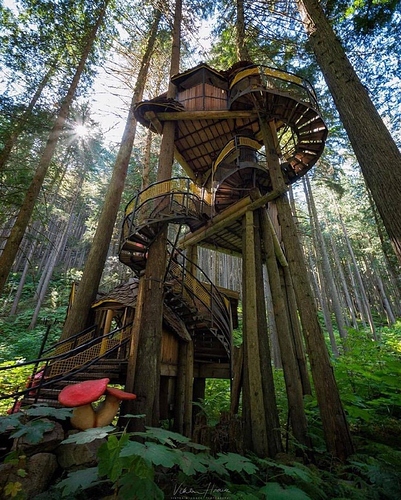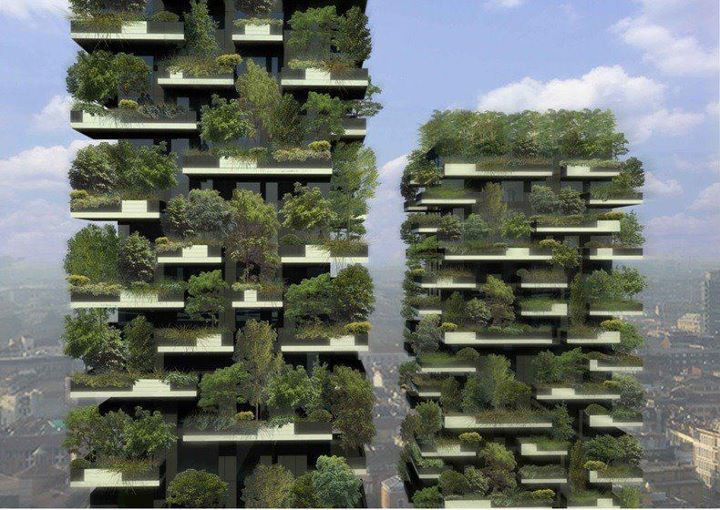I’m also curious what you mean by this.
Not much truly environmentally friendly about development. Some is obviously worse than others and mitigating impact should be a function of design, but everything most folks on here get excited about around construction takes a looong time to prove significant environmental merit beyond discussions leaning into mitigation of this versus the impact over there, etc, etc…Increasing density is more environmentally friendly than suburban sprawl development is a viable discourse but let’s admit, we’re still piling on…
That’s from a rendering on the website. I think it’s just a preliminary rendering… not from Hoffman, unfortunately.
Edit: specifically, it’s from the BUILD app we sent to the feds in 2018, before a developer was selected.
Ehh that’s not that unique
While I’m not a fan of that old rendering, the aesthetics in the photos from DC resonate more with me personally.
But you said environmentally friendly, not unique. I think a steel exoskeleton with vines growing around the beams is pretty unique. That’s my opinion not being an connoisseur of building architecture.
I know I meant just throwing a little green on a building is average and won’t actually help with anything. I’ll send a photo of something I’d like to see 
green life I hate autocorrect
You could always edit…I have that problem too.
It’s a vertical forest! Imagine the leaves in the street below around fall time.




What about hurricanes or severe storms… where would those trees land if they got caught in high winds? Not to be a Debbie Downer, but that is the first thing that comes to mind when I see this type of design. It would only take one Hurricane Fran, and there could be serious consequences. If the building stood despite trees flying off, would it be structurally damaged?
Also… What about the weight of the mature trees? It would have to be balanced or the building would lean or maybe become structurally unstable if a few trees died on one side, but survived on the other.
These green buildings look good on paper, but the practical application in real life raises a lot of issues.
If they get too big, you just toss them over. Keep’em trimmed up to keep the wind impact down. Seems reasonable to me.

It’s a good thing these are exactly the kinds of things that are addressed during the design/engineering phase. People don’t spend dozens of millions of dollars to build buildings that can’t withstand atypical situations, and they wouldn’t risk lives/structural failure just to build something cool!
I know the structural engineers for these towers worked closely with botanists to make sure the structure was coordinated to bear the load of the specific plants that were chosen. I don’t know the details, but I would imagine that they selected plants that remain quite small in maturity (the balcony walls are only a little over a meter tall, which implies they can’t support anything with a significant root system). So I’d imagine the majority of the structural load is coming from the soil, or that the specific scenario you’ve raised is being accounted for in some way – maybe the structure has been designed to be able to withstand uneven loading. For wind, they designed a strapping system that ties the root ball into the stucture, and then they tested them in a wind tunnel to simulate the effect of the wind force at different heights and angles to ensure the plants wouldn’t topple from gusts. Of course, they’d be designing to a completely different standard in Italy than they would here, with our wind potential.
All this said, buildings that are visibly green are huge crowd-pleasers, but there are other more impactful things we can do for sustainable design that aren’t as crazy. I’d like to see shading on our glass towers through louver systems or overhangs, triple glazing, photo-voltaics, green roofs, cladding other than just glass, hybrid timber structures… here’s a pretty cool zero-emissions high-rise a colleague of mine is working on in Vancouver.
Excluding the modern LEED certified buildings, the only “green” building I’m familiar with is the Integon/GMAC building in Winston-Salem. It was designed in the 1970s during the energy crisis, the south facing facade has inset windows where the floor above shades from direct sunlight. The northern side of the building is all glass, to let in natural sunlight. I’m sure things have come along way since then, but as far as energy efficiency, I this this was a pretty good start.
Again, I know very little about the LEED certifications, which are probably light years ahead in efficiency, but I’m just now a fan of tree/plant clad buildings. However, I DO like the idea of “living walls” of vines or succulents for parking structures or other bland walls. 
You’re hired!
The building also doesn’t have to be super tall for this concept either. I’d love to see a 7-10 story that would be much more stout for structural integrity.
Want a vertical forest? Just plant Kudzu at the base of it and let it rip! 
rolls eyes does anyone else have a suggestion
For questions about storms blowing trees off of buildings, all the trees are tethered to the building using steal wires. They touch on this around the 7 minute mark of the video. B1M has a lot of great information and videos about skyscrapers, urban planning, etc.

